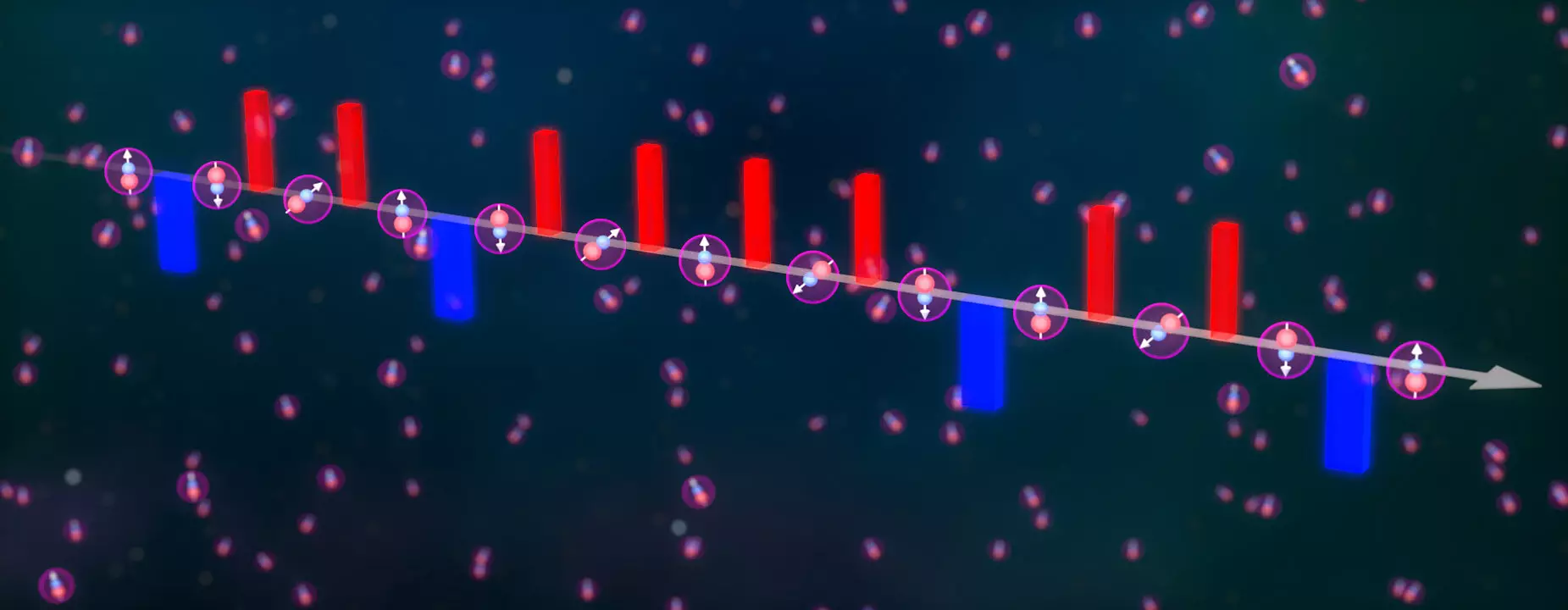Quantum mechanics continues to challenge our understanding of the universe, specifically through the lens of quantum spins which govern various phenomena in materials such as superconductors and magnetic systems. Despite their intrinsic complexity, physicists have historically found it difficult to replicate these spin interactions in controlled laboratory settings. However, recent innovative research led by Professor Jun Ye of JILA and the University of Colorado Boulder, in collaboration with Mikhail Lukin’s team at Harvard University, introduces groundbreaking methods that enhance our ability to manipulate ultracold molecules for a better understanding of fundamental quantum mechanics.
In a significant breakthrough, researchers harnessed Floquet engineering—an advanced technique using periodic microwave pulses to control quantum interactions within a specific system of ultracold potassium-rubidium molecules. These polar molecules serve as a promising foundation for exploring complex quantum many-body systems. The flexibility provided by Floquet engineering is akin to adjusting the frequency and intensity of a strobe light, which can yield various visual effects; in this case, scientists see a dynamic influence on how quantum particles interact.
The research team creatively designed an arbitrary waveform generator to produce the necessary microwave pulses. This innovative setup enables them to apply thousands of precisely timed pulses to manipulate molecular interactions in ways that were previously unattainable. Annette Carroll, a graduate student involved in the study, expressed the significance of this advancement, stating, “We can now engineer a pulse sequence that removes single particle noise and also modify interactions in the system.”
Prior to the application of Floquet engineering, the scientists embarked on encoding quantum information within the two lowest rotational states of the potassium-rubidium molecules. This foundational step involved initiating a microwave pulse, leading the molecules into a quantum superposition—a state where they can exist in multiple configurations simultaneously. Following this preparation, the team utilized Floquet engineering to tune specific quantum interactions modeled by the XXZ and XYZ spin systems. These constructs are essential for articulating how spins interrelate, offering insights into magnetic materials and myriad many-body phenomena.
Visualizing these interactions becomes simpler when comparing the spins of the molecules to dancers adjusting their movements based on their partners. The quantum system exhibited changes akin to shifting dance patterns—sometimes pulling and at other times pushing against one another. As the researchers fine-tuned their experimental parameters, they concluded that Floquet engineering mirrored the effects of direct electric field adjustments on molecular interactions. This newfound precision allowed them to realize less symmetric interactions that electric fields could not generate.
One of the most exciting findings from this research was the observation of two-axis twisting dynamics. This phenomenon occurs when quantum spins experience manipulations along two different axes, which presents opportunities for generating highly entangled states. Such states hold promise for advancing quantum sensing techniques, establishing new standards in precision measurements, and driving forward developments in quantum technologies.
Calder Miller, the study’s first author, highlighted the excitement surrounding their initial observations of two-axis twisting. The concept itself had been floated in the early 1990s but had only recently found practical application in laboratory experiments. The implications of their work are significant; by establishing efficient methods of creating spin-squeezed states, the researchers open avenues for increasing measurement sensitivity in important spectroscopic applications.
While the current wave of advancements reflects substantial progress in the manipulation of quantum spins using Floquet engineering, the research team recognizes the necessity for future validation of their findings. Although the immediate objectives did not involve direct detection of entangled states, Miller outlined plans for enhanced detection techniques, paving the way for verification of these intricate quantum phenomena.
Colleagues from JILA and NIST have also employed distinct methodologies through cavity quantum electrodynamics (cavity QED) to demonstrate two-axis twisting, showcasing the versatility and richness of the field. Ongoing collaboration and exploration are vital as researchers inch towards grasping the multifaceted behaviors of quantum systems and the fundamental physics they represent.
The findings from Professor Jun Ye’s team epitomize the spirit of innovation within quantum research while reinforcing the importance of precise control mechanisms like Floquet engineering. By unlocking new configurations for molecular interactions in the quantum realm, this work is set to influence a vast array of fields, sparking a deeper understanding of the forces that shape the universe.


Leave a Reply
You must be logged in to post a comment.